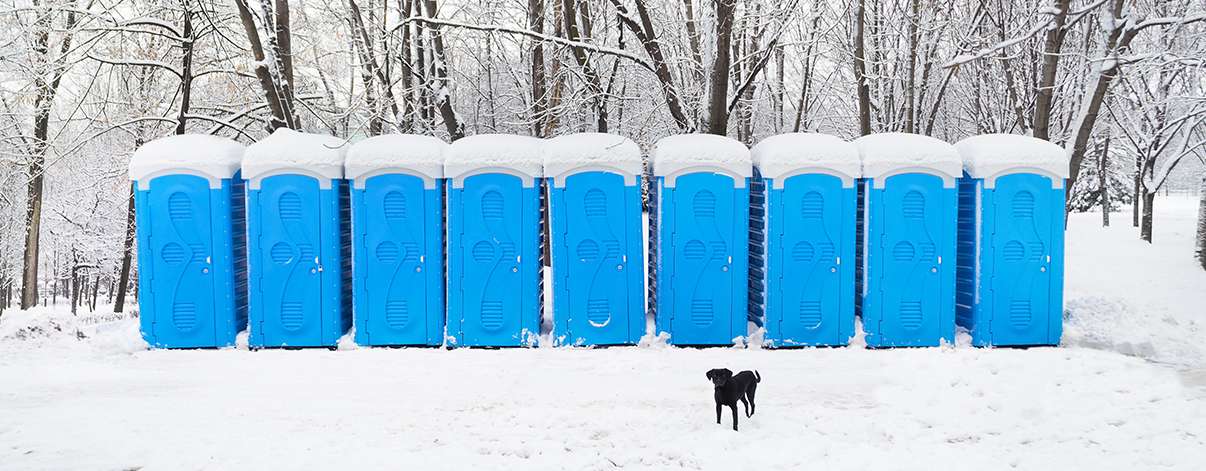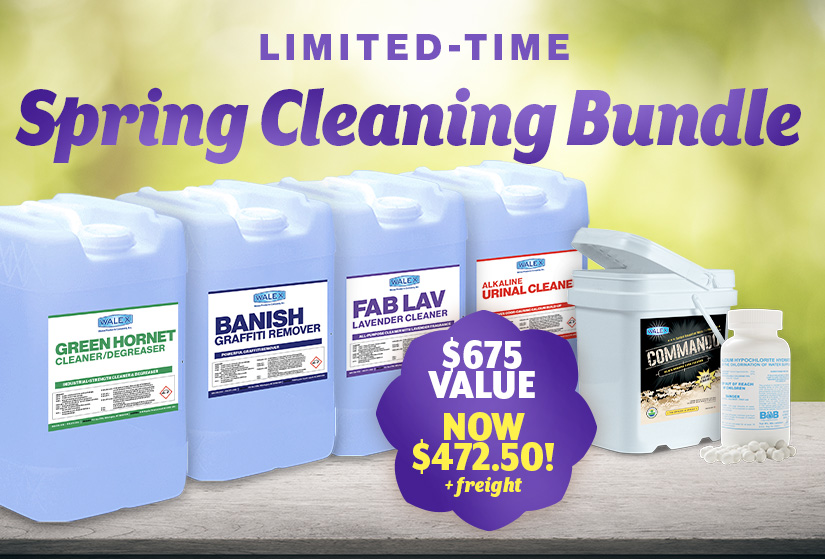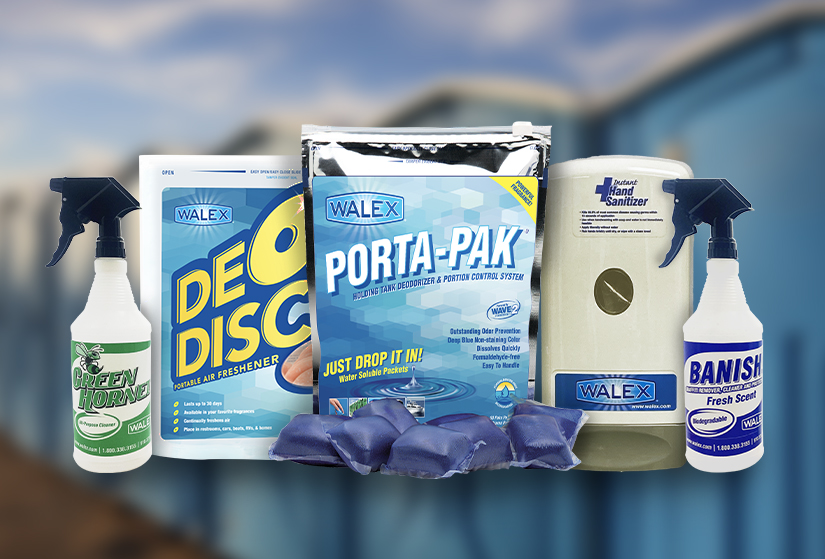
December 05,2019
How to winterize your portable toilets
Walex’s leading line of portable sanitation products will keep your portable toilets smelling fresh, but what do you do when frigid winter temperatures cause the contents of those portables to completely freeze? You can’t service frozen toilets, so it’s critical that you winterize all your equipment, especially your portable toilets. How you do that depends on just how frigid your climate is, but here are a few general tips to keep your operation running through the winter season.
Take me straight to the freezing chart
You can start by proactively preventing freezing. Tuck your units up against a wall instead of leaving them out in the open, exposed to the elements. Wind chill can cause your portables to freeze even faster. Also keep a close eye on the 10-day weather forecast. That way you won’t be scrambling to winterize your portables or run out of time and end up with a fleet of frozen units.
The next step in winterizing is adding a mixture to your holding tank to prevent the liquid from freezing. Depending on the temperatures you’re dealing with, you’ll need some combination of salt and water (brine), methanol and water, or salt, methanol and water. There are pros and cons to each.
Brine will only protect you down to about 0 ° F. You can make your brine using rock salt or calcium chloride pellets. Mix with water according to the chart below and circulate the solution.
Below 0 ° F, start adding methanol to your mixture. On the plus side, you don’t have to wait for methanol to dissolve like you do salt. But you must be cautious when working with methanol because it is harmful to your health if you inhale the vapors for too long or accidentally ingest it. Methanol mixed with water is also flammable when the percentage of methanol exceeds about 30%.
The chart below will help you create your winterization mixture. For all your sanitation and deodorization needs, contact the experts here at Walex.
PORTABLE RESTROOM FREEZING CHART
SALT
½ lb. per gallon of water protects to 26 F
1 lb. per gallon of water protects to 19 F
1 – ½ lbs. per gallon of water protects to 11 F
2 lbs. per gallon of water protects to 0 F
(Note: 2 lbs. of salt is the maximum amount dissolvable in one gallon of water.)
METHANOL
5% or 6.4 oz. per gallon of water protects to 28 F
10% or 12.8 oz. per gallon of water protects to 22 F
15% or 19.2 oz. per gallon of water protects to 17 F
20% or 25.6 oz. per gallon of water protects to 11 F
25% or 32.0 oz. per gallon of water protects to 4 F
30% or 38.4 oz. per gallon of water protects to –4 F
(Note: Methanol and water mixtures can be flammable when the percentage of methanol exceeds about 30%. Refer to Methanol Material Safety Data Sheet for health and safety data.)
SALT & METHANOL COMBINED
Start with maximum salt solution, then add methanol at:
5% or 6.4 oz. per gallon of water protects to –6 F
10% or 12.8 oz. per gallon of water protects to –11 F
15% or 19.2 oz. per gallon of water protects to –17 F
20% or 25.6 oz. per gallon of water protects to –21 F
25% or 32.0 oz. per gallon of water protects to –30 F
30% or 38.4 oz. per gallon of water protects to –40 F
(Note: Methanol and water mixtures can be flammable when the percentage of methanol exceeds about 30%. Refer to Methanol Material Safety Data Sheet for health and safety data.)
Our Newest Reads
April 24, 2024
Walex manufacturing is now 100% solar-powered
April 2, 2024
Limited-Time Spring Cleaning Bundle
February 22, 2024



